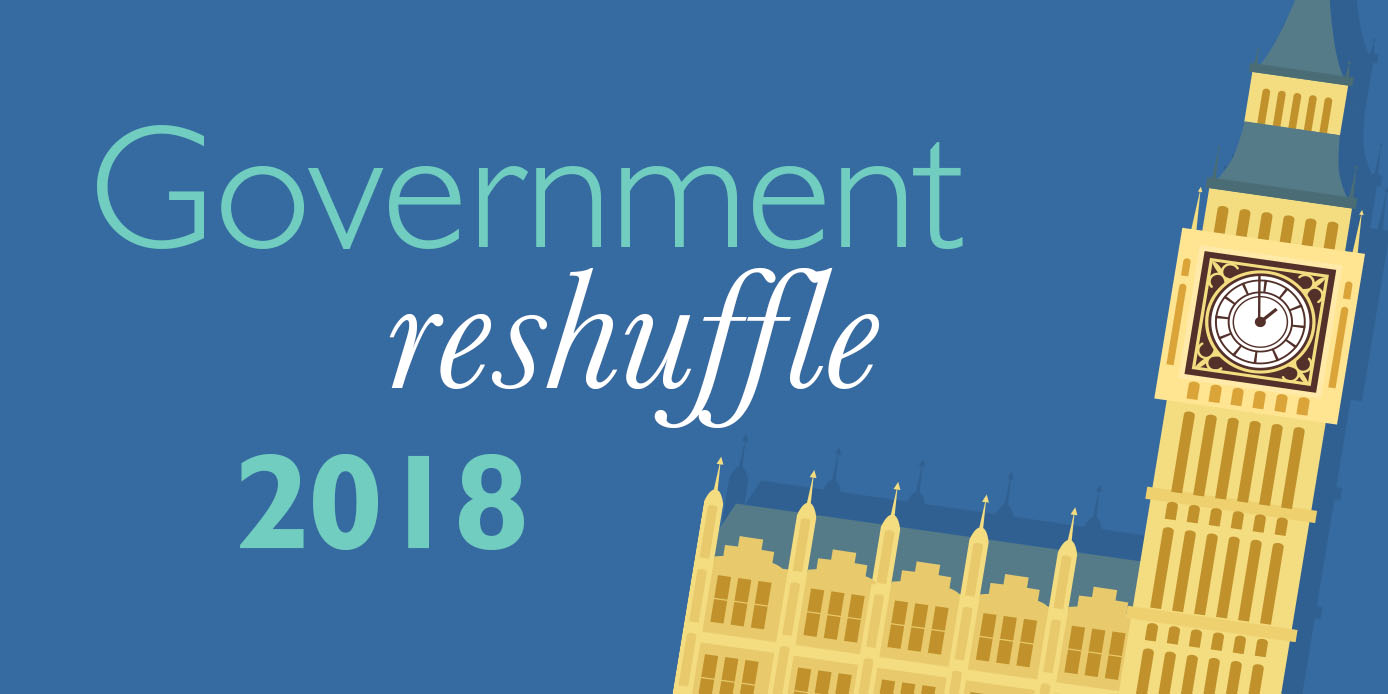
The 2018 reshuffle: a pragmatic response to a challenging political climate
After the departure of several ministers from their posts in late-2017, a government reshuffle was always on the cards. The only question was when, and in parliament’s first week back after Christmas, it finally happened.
This was a chance for the Conservative government to start the New Year looking confident and refreshed, bursting with new ideas, and to assert a sense of order to a supposedly unruly frontbench. What the reshuffle delivered received a mixed reception.
Day one – the reshuffle of senior ministers – was underwhelming and undermined by a chasm between what was briefed to the press pack, and what actually happened. Day two – the reshuffle of junior ministers – was more positive and enabled the Tories to communicate some kind of vision about its next generation of leaders.
In the three big positions of state, there was no change. There were, however, moves in other departments. David Gauke moved from work and pensions to become the new justice secretary, and the first solicitor to be made Lord Chancellor, while Mr Gauke’s predecessor in the Ministry of Justice, David Lidington, became the new minister for the Cabinet Office.
There were more changes lower down the ministerial food chain, including two in the Department for Transport, as Nusrat Ghani and Jo Johnson came in as ministers for HS2 and maritime, and rail, respectively, while member of the 2015 intake Rishi Sunak was drafted in to assist Sajid Javid as the minister for local government. In a concerted effort to recognise the problem of social isolation, Tracey Crouch was appointed to the new position of minister for loneliness.
Delving slightly deeper, there were some apparently minor changes which are useful signals of the government’s sense of direction. The Department for Communities and Local Government has been rebranded to the Department for Housing, Communities and Local Government. The change could be merely cosmetic, but with the secretary of state recently launching Homes England to replace the Homes and Communities Agency, the government is signalling that it intends to back up the name-change with a serious focus on addressing the housing supply crisis – something the prime minister identified as her “mission” in her party conference speech.
The government reshuffle’s dominant tone reflected the ‘steady hand on the tiller’ approach which endeared Theresa May to many party members in the first place. Since her appointment as prime minister this hasn’t played out in practice – her tenure has been marked by precariousness and instability – but the nature of this reshuffle reflects Mrs May’s natural instincts, and accurate diagnosis that consistency in uncertain times is the key to success. But this “small c conservative” approach was also a necessity: the Tories’ weakness in parliament means Mrs May cannot pursue dramatic changes of direction which might backfire and risk her own position becoming open to even more scrutiny. Meanwhile, keeping the high-profile colleagues most likely to rabble-rouse against her in the relatively controlled confines of the cabinet is a sensible way of maintaining party discipline.
Labour party
If people were underwhelmed by the government’s reshuffle, then Labour’s was barely noticed. In one of the only appointments that made significant headlines, Clive Lewis returned to the frontbench as a shadow Treasury minister. This appointment may reflect a move by Jeremy Corbyn to develop more plurality in his shadow team – Lewis having been critical of the Labour leader in recent months.
Arguably, however, the dominant theme of Mr Corbyn’s reshuffle was the fast-tracking of several MPs from the 2017 intake into the shadow team, including Preet Gill and Dan Carden, both shadow international development ministers, Laura Pidcock, the shadow minister for labour, and Laura Smith, a shadow cabinet office minister. While these appointees are new to Westminster politics, Mr Corbyn clearly believes they are people with the talent and political instincts to be effective shadows and, potentially, government ministers in the not too distant future.
In what looks like a concerted effort to keep Grenfell, fire safety and the interests of firefighters at the top of the political agenda, the Labour party has also made a new position of shadow minister for fire, filled by another of the 2017 intake Karen Lee.
Freshwater’s public affairs team provides political intelligence and policy analysis across sectors. Contact us to discuss political intelligence and monitoring services tailored to your needs, or sign up for a free trial of our daily transport and infrastructure monitoring report.
